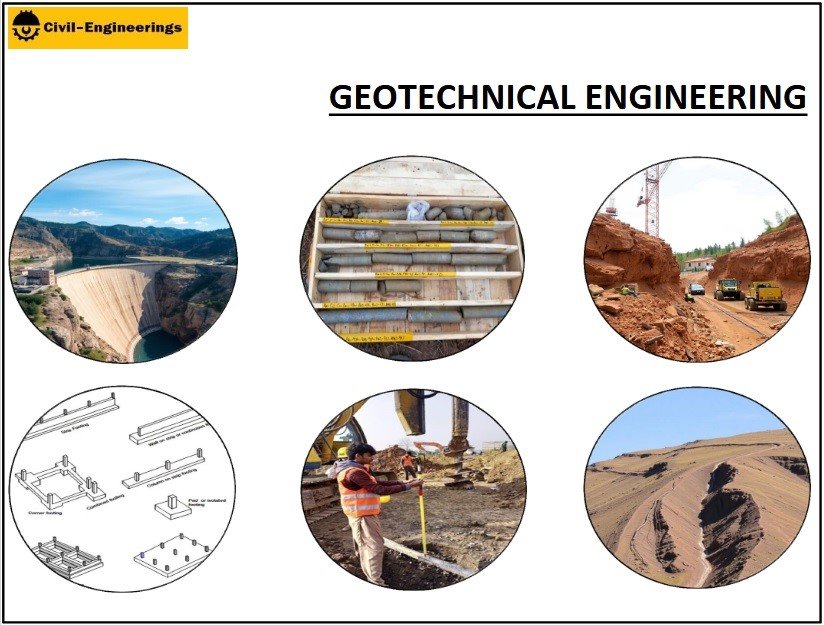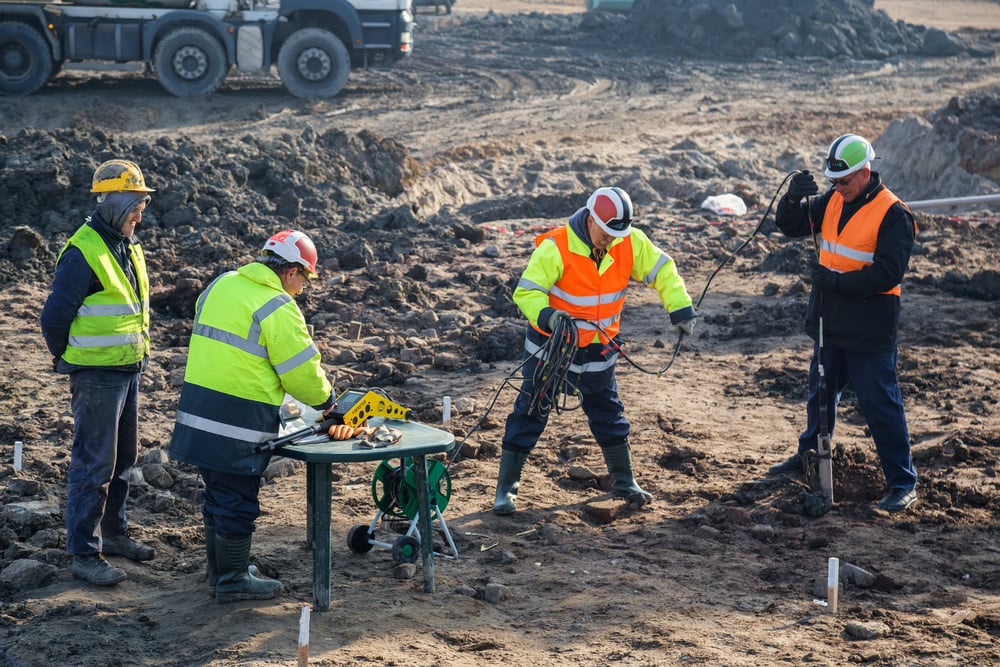Specialized Geotechnical Engineering Solutions - Questions
Specialized Geotechnical Engineering Solutions - Questions
Blog Article
All about Specialized Geotechnical Engineering Solutions
Table of ContentsSome Of Specialized Geotechnical Engineering SolutionsUnknown Facts About Specialized Geotechnical Engineering SolutionsAll about Specialized Geotechnical Engineering SolutionsSpecialized Geotechnical Engineering Solutions Can Be Fun For AnyoneExamine This Report about Specialized Geotechnical Engineering SolutionsSome Known Questions About Specialized Geotechnical Engineering Solutions.
William Rankine, a designer and physicist, created an alternate to Coulomb's earth pressure concept. Albert Atterberg developed the clay consistency indices that are still used today for dirt category. In 1885, Osborne Reynolds acknowledged that shearing causes volumetric expansion of thick products and tightening of loose granular products. Modern geotechnical engineering is stated to have begun in 1925 with the magazine of Erdbaumechanik by Karl von Terzaghi, a mechanical engineer and geologist. Terzaghi additionally created the framework for theories of birthing capability of structures, and the theory for prediction of the rate of negotiation of clay layers due to combination. Later on, Maurice Biot totally developed the three-dimensional soil debt consolidation concept, prolonging the one-dimensional version formerly established by Terzaghi to much more basic theories and introducing the set of basic formulas of Poroelasticity.
Geotechnical designers explore and identify the homes of subsurface problems and materials.
The 10-Minute Rule for Specialized Geotechnical Engineering Solutions
Geologic mapping and analysis of geomorphology are normally finished in examination with a geologist or engineering geologist. Subsurface exploration usually includes in-situ testing (for instance, the standard infiltration examination and cone infiltration examination). The digging of examination pits and trenching (particularly for locating mistakes and slide aircrafts) might additionally be used to find out about dirt problems at depth. , which utilizes a thick-walled split spoon sampler, is the most common way to collect disturbed examples.

Typically, the interface's precise geometry is unidentified, and a simplified interface geometry is presumed. Limited inclines call for three-dimensional models to be assessed, so most inclines are analyzed thinking that they are infinitely broad and can be stood for by two-dimensional models.
Our Specialized Geotechnical Engineering Solutions Diaries

Measurement of amounts and evaluation of actual problems. It is unsuitable for tasks whose style can not be modified during construction.
Principles of Geotechnical Design. Thomson Discovering. he has a good point Budhu, Muni (2007 ). Soil Auto Mechanics and Structures. John Wiley & Sons, Inc. . ISBN 978-0-471-43117-6. Interrupted soil residential or commercial properties and geotechnical layout, Schofield, Andrew N., Thomas Telford, 2006. Guerriero V., Mazzoli S. (2021 ). "Theory of Effective Stress And Anxiety in Soil and Rock and Effects for Fracturing Processes: An Evaluation".
The Main Principles Of Specialized Geotechnical Engineering Solutions
Principles and Practice of Ground Renovation. Ground Enhancement Principles And Applications In Asia. Layout analysis in rock mechanics.
Cengage Learning, Stamford, 666 p. Atkinson, J., 2007. The technicians you could look here of soils and structures. Taylor & Francis, N.Y., 442 p. Floating Offshore Wind Turbines: Actions in a Sea state Pareto Optimal Layouts and Economic Analysis, P. Sclavounos et al., October 2007. Nicholson, D, Tse, C and Cent, C. (1999 ). The Observational Method in ground design principles and applications.
3 Easy Facts About Specialized Geotechnical Engineering Solutions Described
These records are tailored to meet the certain needs of a project and include style criteria and guidance for the building and construction of a variety of manufactured frameworks. Along with providing consultancy services covering areas such as incline stability and load-bearing capacities for different materials, these engineers embark on study and development activities to improve approaches, equipment, materials understanding and evaluation covering whole lifecycles (Specialized Geotechnical Engineering Solutions).
Engineering the properties and mechanics of rocks including the application of dynamics, liquid technicians, kinematics and product technicians. This unites geology, dirt and rock technicians, and architectural engineering for the style and building and you can try this out construction of structures for a series of civil engineering jobs. This field involves predicting the performance of foundation dirt and rock to a load enforced by a framework, while thinking about performance, economic climate and security.
Rates of pay usually boost as your understanding and skills expand, with standards aiming to a graduate beginning salary of in between 18,000 and 28,000 per year in the UK. This rises to 26,000 to 36,000 with a couple of years of experience and then getting to 40,000 to 60,000+ for elderly, chartered or master engineers.
What Does Specialized Geotechnical Engineering Solutions Mean?
However, with the ideal application it is possible to master the occupation and gain access to a challenging yet fulfilling and important occupation. A geologist would certainly require to re-train to come to be a geotechnical engineer, although there is a lot of cross-over between the 2 careers, which can make this simpler. Geologists require to have an understanding of soils, rocks and various other products from a clinical viewpoint, while geotechnical engineers story their understanding of matters such as soil and rock auto mechanic, geophysics and hydrology and use them to engineering and environmental projects.
When beginning, these engineers will certainly tend to service less complex tasks, accumulating understanding and experience all set for more difficult job later. Geotechnical designers have a tendency to specialise in certain locations as they expand in experience, concentrating on particular infrastructures such as railways, roadways or water. These designers additionally deal with renewable resource, offshore and onshore oil and gas, nuclear power, and a lot more.
Report this page